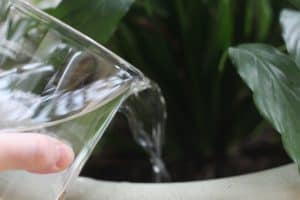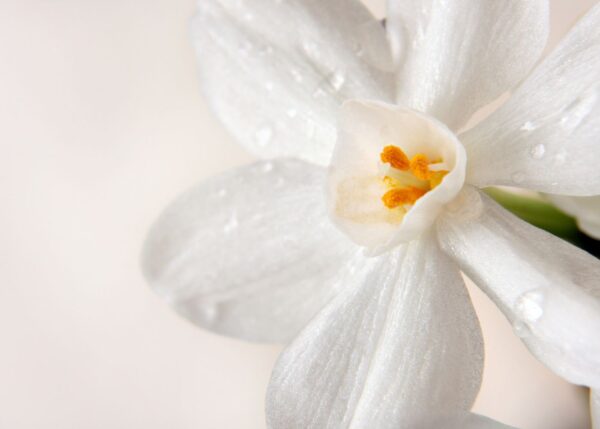The winter season can be a difficult time for gardeners, but don’t despair. Indoor winter gardening offers an opportunity to keep your green thumb active all year round. With the right plants and some knowledge of how to care for them, you can create beautiful indoor gardens that bring life into any room in your home. From houseplants to microgreens and even flowering bulbs, there are plenty of options available when it comes to indoor winter gardening. Read on for our top tips on choosing the perfect plants for your space as well as setting up and caring for your new garden.
Introduction to indoor winter gardening
Winter can be a difficult time for gardeners, but it doesn’t have to be. With the right plants and care, you can enjoy indoor winter gardening all year round. Indoor winter gardening is a great way to bring some life into your home during the cold months of the year. It also provides an opportunity to grow vegetables or herbs that may not thrive in outdoor conditions.

Choosing plants for your indoor garden
When selecting plants for your indoor winter garden, consider what will work best in your space and climate. Look for varieties that are hardy enough to survive colder temperatures and low light levels indoors. Consider how much space you have available as well as how much sunlight each plant needs before purchasing any new additions to your garden. Some popular choices include succulents, ferns, cacti, ivy, begonias, and African violets.
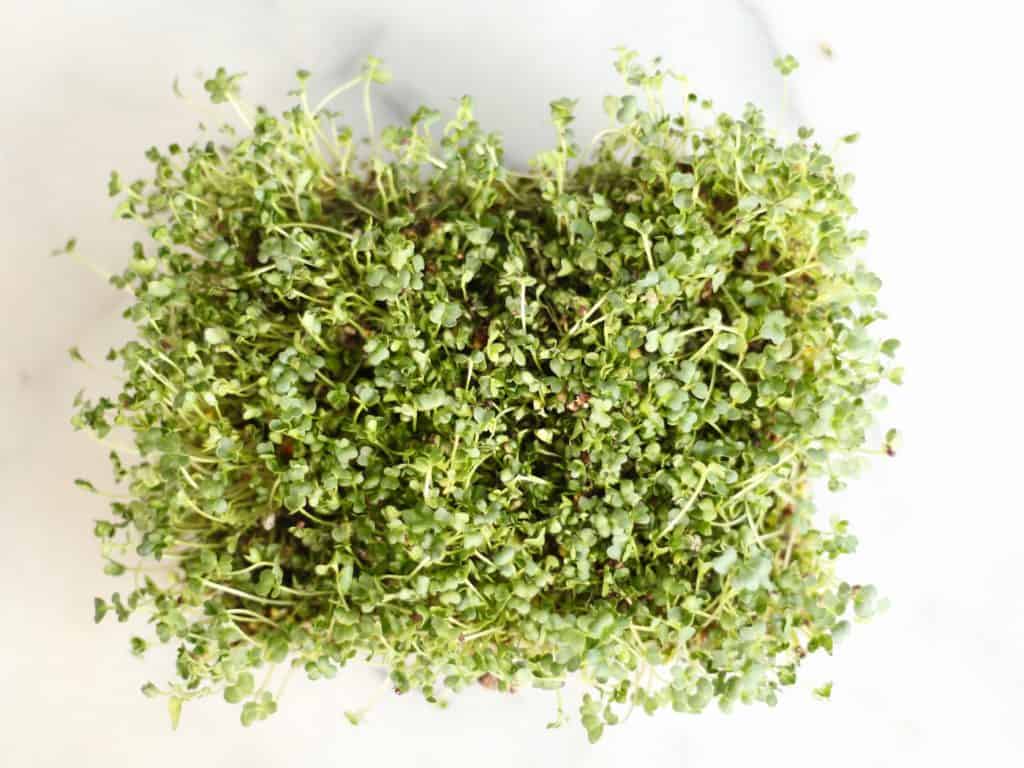
Microgreens
Microgreens are small edible greens that are harvested when they reach 1-3 inches tall with their first set of true leaves appearing above ground level. They offer a variety of flavors from mild lettuce-like sweetness to spicy mustard notes depending on the type of microgreen being grown. Microgreens require very little maintenance compared to other types of plants making them ideal for beginner gardeners or those with limited space indoors during the winter months. Popular microgreen varieties include arugula, kale, and radish sprouts among others.
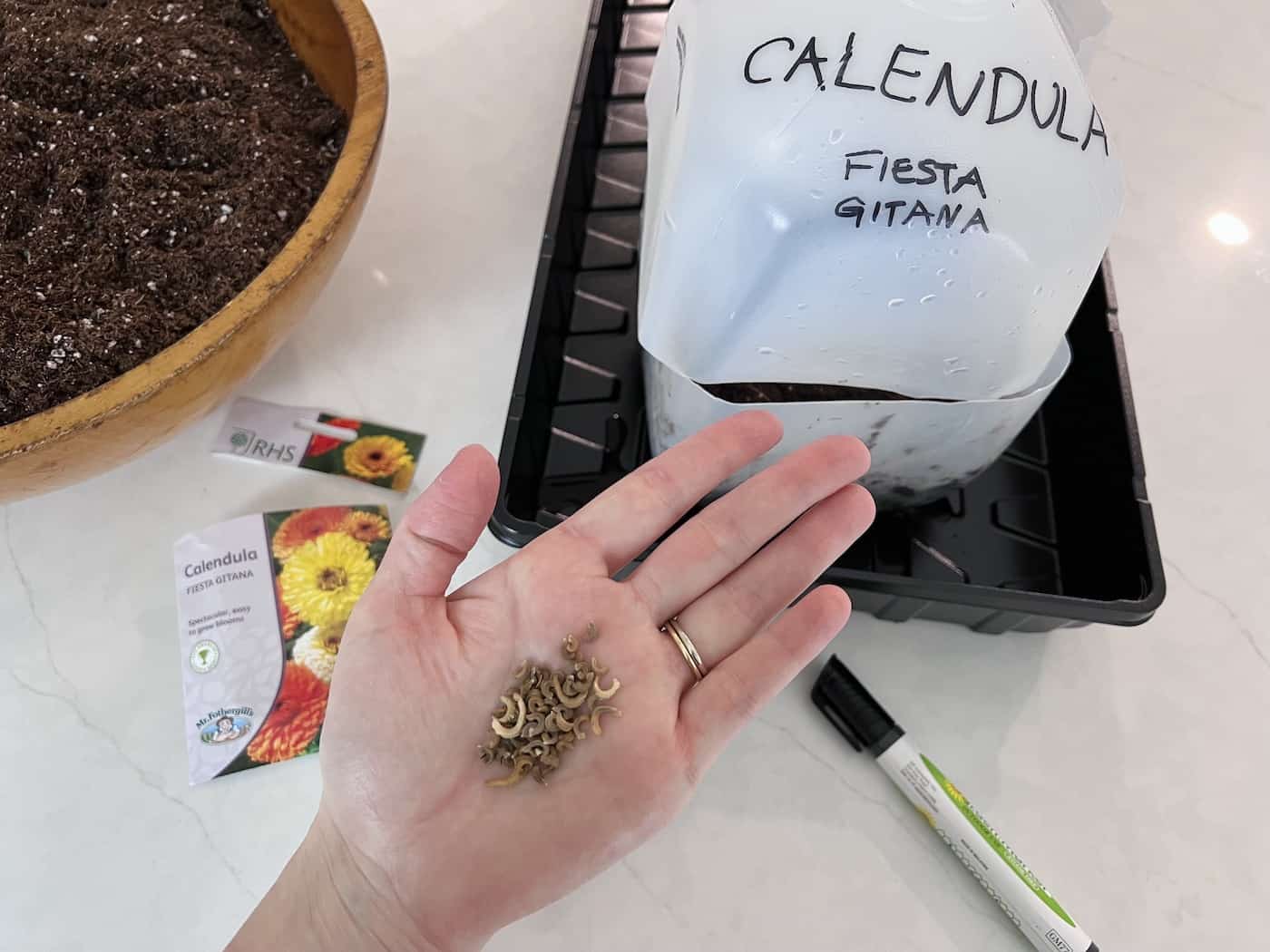
Winter sowing
For those who want more than just foliage in their indoor gardens this winter season, try out “winter sowing,” which involves planting seeds outdoors during late fall or early spring while protecting them from extreme weather conditions such as frost or heavy snowfall. This is done by using plastic containers filled with soil mediums like peat moss or vermiculite and covering them with lids until germination occurs – usually taking about two weeks. Through this method, you can get started early on growing vegetables like tomatoes, peppers, cucumbers, etc., even if there aren’t enough daylight hours yet.

Caring for your garden
Once you’ve chosen your plants and planted them properly, it’s important to provide proper care throughout the entire process. This includes watering regularly, providing adequate drainage, ensuring good air circulation around each plant, pruning back dead growth, fertilizing occasionally (if needed), controlling pests and diseases, etc. In order to keep everything healthy, happy, and thriving make sure to check up on things at least once every week so nothing gets overlooked.
With the right planning and preparation, indoor winter gardening can be a great way to bring some color and life into your home during the colder months. Now let’s look at how to choose the best plants for your garden.

Choosing plants for your indoor garden
When it comes to indoor winter gardening, there are a few types of plants that are well-suited for the task. Succulents, herbs, and houseplants can all be grown indoors during the colder months. It’s important to choose plants that will thrive in your climate and space.
Succulents come in many shapes and sizes and require minimal care. They prefer bright light but can tolerate low light levels as well. Some popular succulent varieties include aloe vera, jade plant, echeveria, haworthia, sedum, kalanchoe, crassula ovata (jade tree), sansevieria trifasciata (snake plant), and more.
Herbs such as basil or oregano make great additions to any indoor garden because they don’t take up much space but provide lots of flavor for cooking dishes. Herbs need plenty of sunlight so if you have a south-facing window then this is ideal for growing herbs indoors during the winter months. You can even try herb microgreens (like basil).
Houseplants also make excellent choices for an indoor winter garden since they are relatively easy to care for compared to other types of plants like vegetables or flowers which require more maintenance. Popular houseplant varieties include philodendron cordatum (heartleaf philodendron), monstera deliciosa (Swiss cheese plant), dracaena marginata (dragon tree), and pothos ivy just to name a few.
When choosing plants for your indoor winter garden, it is important to consider their needs such as water requirements or how much sunlight they need each day before making a purchase at your local nursery or home improvement store. Doing some research beforehand will help ensure that you pick out the right type of plants that will flourish in your environment throughout the cold season.
With careful consideration of the plants that will thrive in your home and environment, you can create a unique indoor garden to enjoy throughout the winter months. Next, let’s explore some of the best houseplants for creating an inviting and lively atmosphere indoors.
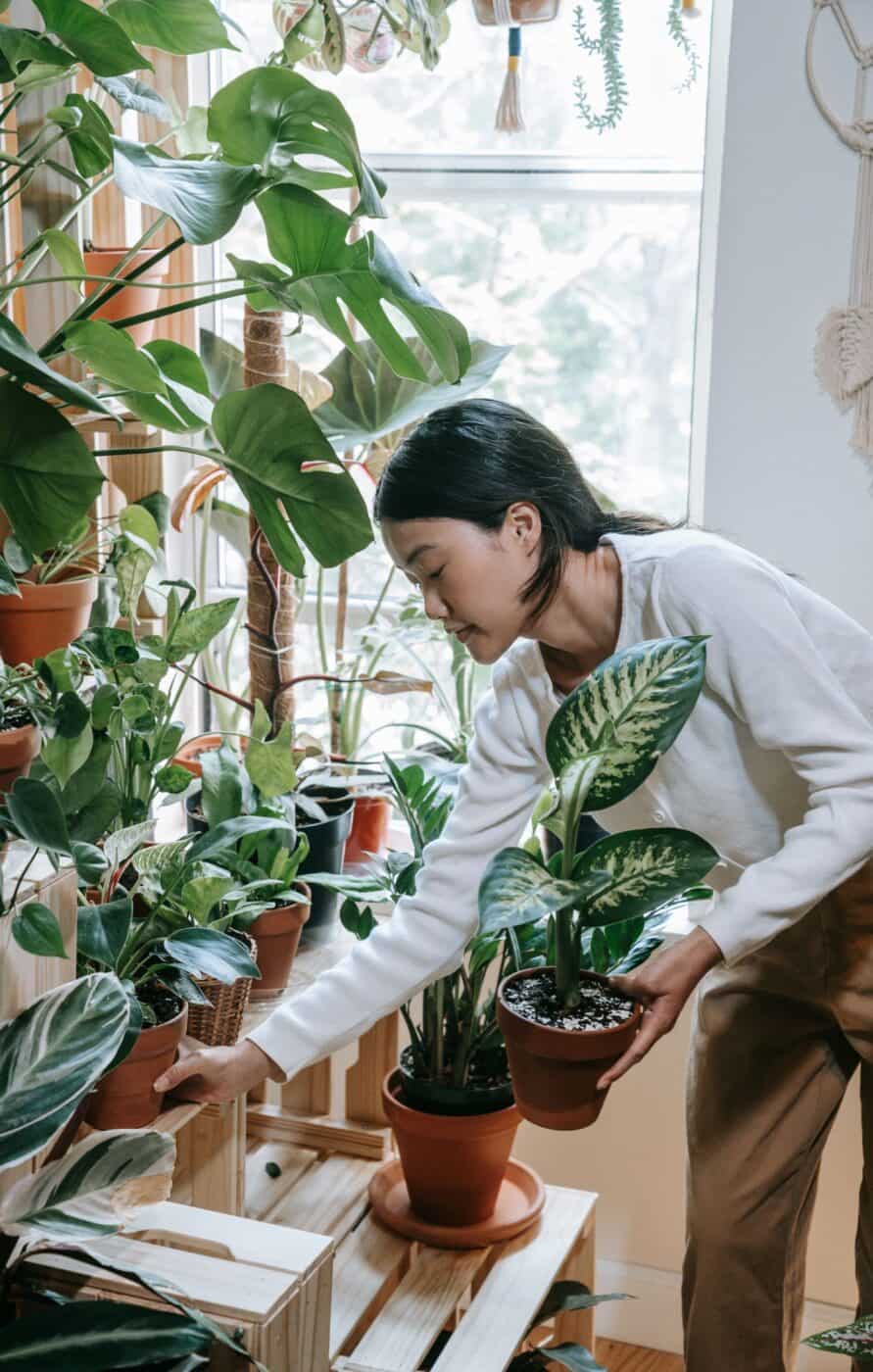
1. Houseplants
Houseplants are a great way to bring life and color into your home during the winter months. Not only do they look beautiful, but they also help purify the air and provide a sense of calmness in any room. With so many varieties available, there’s sure to be one that fits your style and budget.
When selecting houseplants for indoor gardening, it’s important to consider their light requirements. Some plants need bright sunlight while others prefer low-light conditions or indirect sunlight from a nearby window. It’s also important to check if the plant is toxic before bringing it indoors as some can be harmful if ingested by children or pets.
The type of soil you use will depend on what kind of plant you have chosen; most houseplants require a well-draining potting mix with added organic matter such as compost or peat moss for extra nutrients. If possible, try to find an all-purpose potting mix that includes fertilizer already mixed in for convenience’s sake.
Watering needs vary depending on the type of plant you have chosen; some may need more frequent watering than others while some might not need water at all. Be sure to read up on each individual species’ care instructions before adding them into your garden space as overwatering can cause root rot which can kill off entire plants quickly.
Finally, don’t forget about fertilizing your houseplants every few weeks during their growing season (spring through fall). This helps ensure healthy growth and vibrant blooms throughout the year. There are many types of liquid fertilizers available specifically designed for indoor gardens – just make sure whatever product you choose is labeled safe for edible plants if you plan on consuming anything grown inside your home.
Houseplants are a great way to bring life into your home during the winter months, but if you’re looking for something even more exciting and automated, consider investing in a smart garden.

2. Smart gardens
Smart gardens are a great way to bring the outdoors in and enjoy fresh, homegrown produce all year round. With smart gardens, you can grow anything from herbs to lettuce, tomatoes, peppers, and more without ever having to leave your home. Smart gardens are also incredibly easy to use; they come with everything you need for growing plants indoors including pre-seeded pods or seeds that just need water and light.
Aerogardens are one of the most popular types of smart garden systems on the market today. These hydroponic systems provide an optimal environment for growing healthy plants by providing them with just the right amount of nutrients and oxygen needed for growth. Aerogardens come in several sizes so there’s sure to be one that fits your space perfectly whether it’s a small apartment balcony or a large backyard patio area. You can even get models that have built-in lights so you don’t have to worry about finding extra lighting sources when trying to grow indoors during winter months.
Click & Grow is another type of smart garden system designed specifically for those who want something quick and easy but still want high-quality results when it comes time for harvesting their crops. This system uses pre-seeded capsules filled with soil along with special nutrient solutions tailored specifically towards each plant type so all you have to do is add water every few days as needed – no fussing around with fertilizers or other additives. Plus, these systems come equipped with LED lights which makes them perfect for indoor gardening during winter months when natural sunlight isn’t available outside due to shorter days and longer nights.
Overall, if you’re looking for an easy way to start growing your own food at home then investing in a smart garden system like Aerogarden or Click & Grow could be the solution. These systems will make gardening easier than ever before and provide access to fresh fruits, vegetables, herbs, and flowers throughout the entire year – regardless of the season.

3. Microgreens
Microgreens are a great way to bring fresh greens into your home during the winter months. They’re easy to grow indoors and don’t require much space or effort. Plus, they add a splash of color and flavor to any meal.
Growing microgreens is simple. All you need is some trays (or shallow containers), potting soil, seeds, water, and sunlight (or artificial light). Start by filling the trays with soil about two inches deep. Then sprinkle your chosen seeds over the top of the soil in an even layer. Gently press them down so that they make contact with the soil below them – this will help ensure good germination rates. Finally, lightly mist the tray with water until it’s damp but not soggy. Place in a sunny spot or under an artificial light source for 12-14 hours per day and keep moist while waiting for germination which should take 7-10 days depending on the seed variety used.
Once sprouted remove from direct sunlight as too much can cause leggy growth or burning of leaves and place in indirect light instead such as near a window sill where there’s plenty of natural light available but no direct sun exposure throughout most of the day. Water regularly ensures that moisture levels remain consistent without becoming overly saturated at any point otherwise root rot may occur resulting in plant death due to lack of oxygen reaching the roots system preventing nutrient uptake needed for survival. Keep an eye out for pests such as aphids which can be treated using insecticidal soap if necessary however prevention is key so avoid overcrowding plants when possible as this increases risk of pest infestation.
Microgreens are a great way to add flavor and nutrition to any meal, and winter sowing is an even more convenient option for those who want to get the most out of their indoor gardening experience.

4. Winter sowing
Winter sowing is a great way to get your garden started during the winter months. It’s an easy and cost-effective method of gardening that doesn’t require any special equipment or knowledge. All you need are some milk jugs, soil, and seeds.
To begin winter sowing, fill up a few clean plastic milk jugs with potting soil. You can also add compost or other organic matter if desired. Next, poke several small holes in the bottom of each jug for drainage. Once this is done, place your chosen seeds into the soil and lightly cover them with more dirt before watering them thoroughly.
Now it’s time to put your jugs outside. Place them in a sunny spot where they will receive at least 6 hours of direct sunlight each day (or as much as possible). Make sure to keep an eye on the weather forecast so you know when rain or snow may be coming; if there is too much moisture in the air for too long, it could cause mold growth inside your containers which would ruin all of your hard work.
Once planted outdoors, check on your seedlings every couple of days and water as needed – usually once per week should suffice depending on how hot/cold it gets outside. As soon as temperatures start warming up again in springtime (around April), you can transfer these plants into larger pots or directly into beds outdoors if desired – just make sure not to shock their roots by planting them too deep.
With winter sowing you don’t have to worry about starting plants indoors under grow lights as many people do; instead, you can simply let nature take its course and still be successful in growing vegetables and flowers from seed come springtime.
Winter sowing is a great way to get a jumpstart on your spring garden, and now let’s look at how flowering bulbs can add even more color and beauty to your indoor winter gardening.

5. Flowering bulbs
Flowering bulbs are a great way to add color and life to your indoor winter garden. Paperwhites, amaryllis, and hyacinths are all popular choices for brightening up the home during the cold months.
Paperwhites are small white flowers that can be grown indoors in water or soil with minimal effort. They have a sweet scent and make an attractive addition to any room in your house. Amaryllis is another type of bulb flower that blooms with large trumpet-shaped blossoms in shades of red, pink, orange, or white. It’s easy to grow from seed or purchase pre-planted bulbs at most garden centers. Hyacinths come in many colors including blue, purple, yellow, and white, and their fragrant aroma will fill any room with its delightful scent.
Forcing hardy bulbs like tulips and daffodils indoors can also bring some much-needed cheer into your home during the winter months. These types of bulbs require more care than paperwhites or amaryllis but they will reward you with beautiful blooms when done correctly. To force these types of bulbs you’ll need to start them off early by planting them in pots filled with potting mix about 8 weeks before the last frost date for your area (or earlier if possible). Place them somewhere cool (around 40°F) such as a basement or garage until shoots appear then move them into warmer temperatures so they can bloom properly. Once flowering has finished it’s important to remove spent flowers promptly so new buds don’t form on weakened stems – this will help keep plants healthy for future use.
Finally, remember that proper watering is key when growing any type of bulb flower indoors – too little water may cause wilting while too much could lead to root rot which can kill plants quickly. Therefore, it is important to check soil moisture levels regularly throughout the season and adjust accordingly. This should ensure success no matter what kind of bulb you choose for your indoor winter garden.
“Flowering bulbs are a great way to add color and life to your indoor garden during the winter months, but they need special care when it comes to setting up their environment. Let’s take a look at what you’ll need for successful indoor winter gardening.”

Setting up an indoor garden area
Setting up an indoor winter garden can be a great way to bring life and color into your home during the colder months. To get started, you’ll need to choose a location with adequate light and ventilation. A sunny windowsill or balcony is ideal, but if that isn’t available, you can also use artificial lightings such as fluorescent bulbs or LED lights. Make sure there is enough space for the plants to grow without crowding each other out.
Next, select appropriate containers or planters for your plants. If you are growing small herbs like basil or chives, then shallow pots will do just fine; however larger vegetables like tomatoes may require deeper ones. Be sure to choose something with drainage holes so excess water can escape easily and not cause root rot in your plants.
Preparing the soil is another important step when setting up an indoor winter garden. You want it to be nutrient-rich so that your plants have everything they need to thrive indoors all season long. Use a potting mix specifically designed for container gardening – this should contain organic matter such as composted manure and peat moss which helps retain moisture while providing essential nutrients for the healthy growth of roots and foliage alike.
Finally, make sure you provide adequate water for your plants; too much or too little can both lead to problems down the line. Check them regularly (about once every two days) by sticking your finger into the soil about 2 inches deep – if it feels dry then give them some water until it’s damp again but not soggy.
Once your garden is set up, you can move on to the next step of caring for it – ensuring that it stays healthy and vibrant throughout the winter months.

Caring for an indoor garden
Here are the basics about caring for a garden indoors.
Watering
Water your indoor winter garden regularly, but don’t over-water. Allow the top inch of soil to dry out before watering again. To check for moisture levels, stick your finger into the soil, and if it feels dry, water lightly until moistened throughout. If you are using a container with drainage holes in the bottom, make sure to empty any excess water that accumulates in the tray below after each watering session.
Fertilizing
Fertilize your plants every two weeks or so during their growing season with a balanced liquid fertilizer diluted to half strength according to package instructions. Avoid fertilizers containing high amounts of nitrogen as this can cause foliage growth at the expense of flowers and fruit production.
Pest control
Monitor your plants closely for signs of pests such as aphids or mealybugs which can be controlled by spraying them off with a strong stream of water or treating them with an insecticidal soap solution made from 1 tablespoon (15 ml) mild dish detergent mixed in 1 quart (1 liter) warm water.
Prune away dead leaves and stems on a regular basis as these can harbor diseases and attract unwanted pests like mites or scale insects which will damage healthy plant tissue if left unchecked. Additionally, rotate pots occasionally so that all sides get adequate sunlight exposure throughout the day; this helps promote even growth among all parts of your garden.
FAQs about indoor winter gardening
How do you grow an indoor winter garden?
Winter gardening can be a challenge, but with the right preparation and knowledge, it is possible to have a thriving indoor garden. Start by selecting plants that are suitable for your climate and light levels. Consider using grow lights if you don’t have enough natural sunlight in your home.
Make sure to provide adequate drainage for all of your plants, as well as good soil quality. Water regularly and fertilize every few weeks to ensure healthy growth throughout the winter months. Finally, keep an eye out for pests or diseases that may affect your plants during cold weather. With these tips in mind, you can create a beautiful indoor winter garden.
Can I grow flowers indoors in winter?
Yes, you can grow flowers indoors in winter. It is possible to enjoy the beauty of blooms all year round with a bit of planning and preparation. You will need to choose plants that are suitable for indoor growing conditions such as low light levels, high humidity, and temperature control.
Additionally, you should ensure your space has adequate drainage and ventilation so your plants don’t become waterlogged or suffer from too much heat or cold. With some research into what types of flowers do best indoors during the winter months and proper care for those plants, you can have beautiful blooms even when it’s cold outside.
What can you grow indoors in the fall?
Fall is a great time to start growing indoors. There are many options for plants that thrive in the cooler temperatures of fall. Herbs such as parsley, oregano, and basil can be grown in pots or planters. Leafy greens like kale, spinach, and lettuce can also be grown in containers.
Houseplants like pothos and snake plants are easy to care for and make great additions to any indoor space. Flowers such as pansies, violas, petunias, and snapdragons will add color to your home during the colder months. With some patience and dedication, you can have an indoor garden filled with beautiful blooms all year round.
Can you grow vegetables indoors all year round?
Yes, it is possible to grow vegetables indoors all year round. With the right equipment and knowledge, anyone can create a thriving indoor garden that produces fresh produce throughout the year. It takes some planning and dedication to ensure your plants have enough light, water, nutrients, and space for optimal growth.
Additionally, choosing varieties of vegetables that are suitable for indoor growing will help you achieve success in your endeavor. With patience and care, you can enjoy homegrown veggies all year long.
Before you go…
Indoor winter gardening is a great way to bring life and color into your home during the colder months. With a careful selection of plants, smart gardens, microgreens, winter sowing, and flowering bulbs you can create an indoor garden that will last through the season. Setting up your garden with proper care and maintenance will ensure it thrives all year round. Indoor winter gardening is a fun and rewarding experience for any homeowner who wants to add some extra beauty to their space.
Resources
- Winter crops: 28 cool-season vegetables for a year-round garden harvest
- Winter sowing guide for planting seeds outdoors in cold climates
- Best seeds for winter sowing
- Paperwhite flower: A lovely indoor winter bloomer
- Winter sowing guide for planting seeds outdoors in cold climates
References
- Gardner, P. (2023, January 30). A CALS Guide to Winter Gardening. CALS News. Retrieved February 15, 2023, from https://cals.ncsu.edu/news/a-cals-guide-to-winter-gardening/
- Newman, N. (2023, January 25). Grow an indoor garden this winter. Click On Detriot. Retrieved February 15, 2023, from https://www.clickondetroit.com/live-in-the-d/2023/01/25/grow-an-indoor-garden-this-winter/
- Bradley, S. (2000). Winter Gardening. Time-Life Education, Incorporated.
Need more info?
Are you interested in learning more about indoor winter gardening? Here are our best articles about it!








